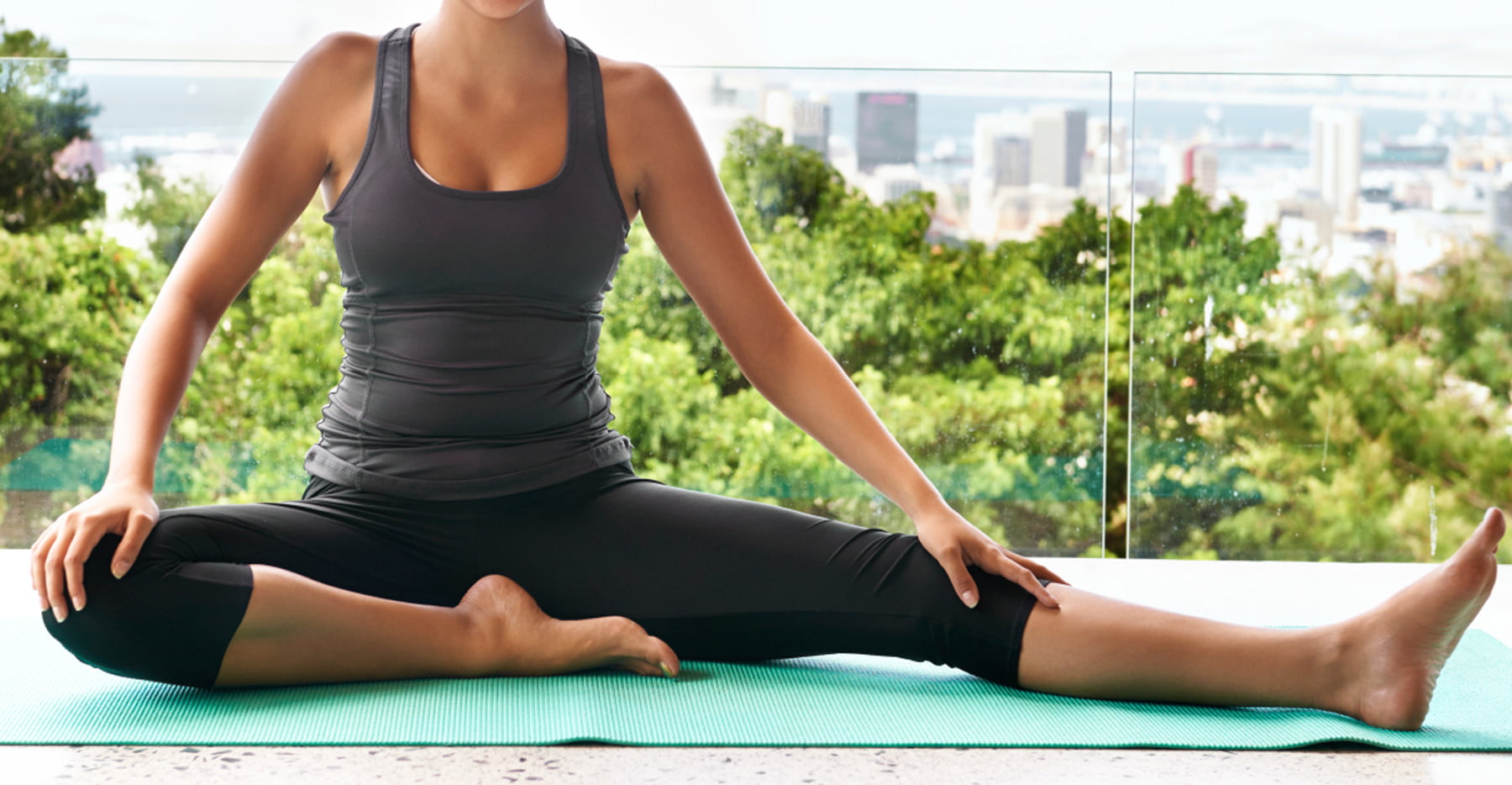I. Introduction
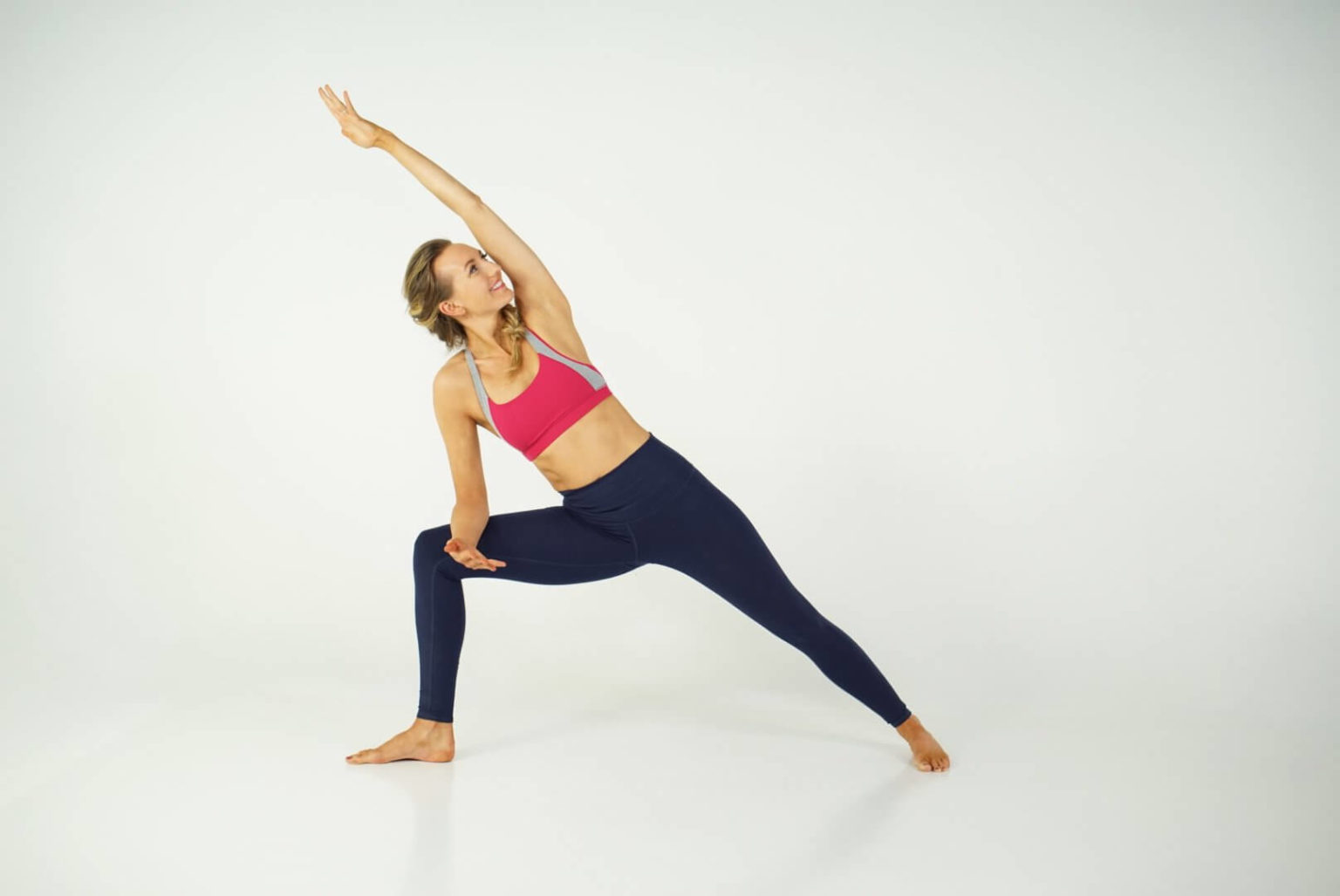
Knee pain is a prevalent issue that affects a significant portion of the population. Whether it stems from injuries, conditions such as arthritis, or overuse and repetitive strain, knee pain can have a profound impact on one’s daily life and overall well-being. However, there are various methods that can help manage and alleviate knee pain, and one of them is the practice of yoga.
II. Understanding Knee Pain
A. Causes and Common Conditions Leading to Knee Pain
- Injuries and Trauma: Knee pain can often be caused by injuries, such as ligament tears (ACL, MCL), meniscus tears, or fractures. These injuries can occur due to accidents, falls, or sports-related incidents.
- Arthritis: Osteoarthritis and rheumatoid arthritis are two common types of arthritis that can lead to knee pain. Osteoarthritis is characterized by the breakdown of cartilage in the knee joint, while rheumatoid arthritis is an autoimmune disease that causes inflammation in the joints.
- Overuse and Repetitive Strain: Engaging in activities that involve repetitive movements, such as running or jumping, can put excessive strain on the knees, leading to pain and discomfort.
B. The Importance of Targeted Exercise for Knee Pain
Exercise plays a crucial role in managing knee pain by strengthening the muscles around the knee joint, improving stability, and promoting overall joint health. Targeted exercises can be helpful in reducing knee pain and preventing further damage.
III. The Benefits of Yoga for Knee Pain
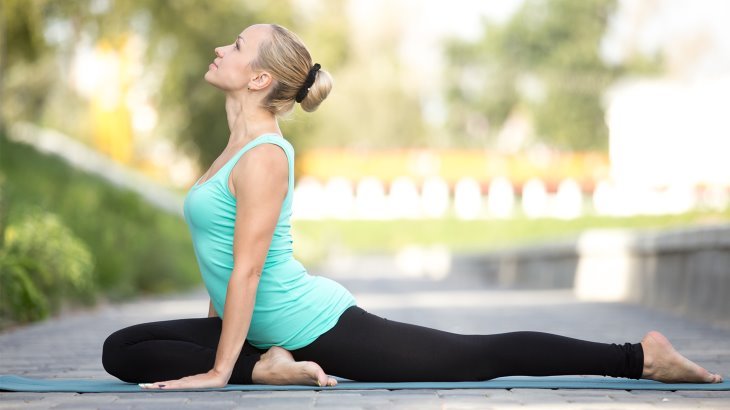
A. Strengthening the Muscles around the Knee
- Engaging the Quadriceps, Hamstrings, and Glutes: Yoga poses that involve strengthening these muscle groups, such as Warrior II, Chair Pose, and Bridge Pose, can help stabilize the knee joint and alleviate pain.
- Improving Stability and Joint Alignment: Yoga poses that focus on proper alignment, such as Mountain Pose and Tadasana, can help improve the stability of the knee joint and reduce the risk of injury.
B. Enhancing Flexibility and Range of Motion
- Gentle Stretching to Alleviate Stiffness and Tightness: Yoga incorporates gentle stretching exercises that can help alleviate stiffness and tightness in the knee joint. Poses such as Downward Dog, Triangle Pose, and Half Pigeon can be beneficial for increasing flexibility.
- Increasing Joint Lubrication and Mobility: Yoga encourages mindful movements and deep breathing, which can help increase joint lubrication and improve mobility in the knee joint.
C. Promoting Relaxation and Stress Reduction
- Decreasing Pain Perception and Tension in the Knee Area: Mindfulness-based practices, such as deep breathing and meditation, can help decrease pain perception and tension in the knee area.
- Reducing Inflammation Through Mindfulness and Breathing Techniques: Yoga teaches relaxation techniques that help reduce stress levels, thereby reducing inflammation in the body, including the knees.
IV. Yoga Poses for Knee Pain Relief
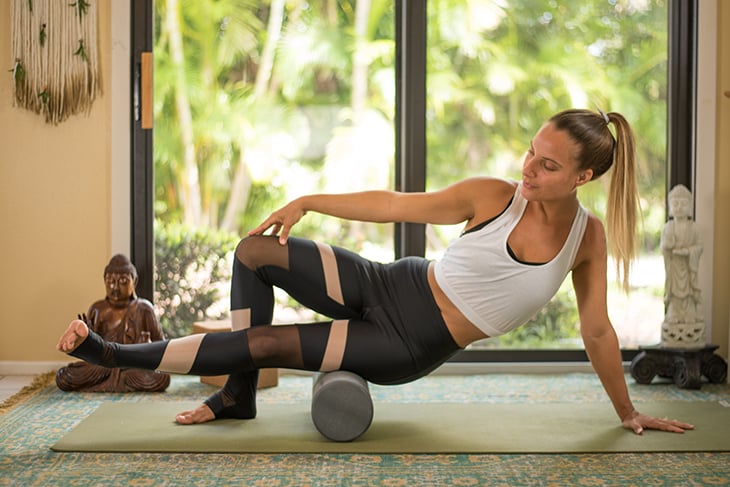
A. Gentle Warm-up Poses
- Cat-Cow Pose (Marjaryasana-Bitilasana): This pose helps to warm up the spine and gently mobilize the knee joint. Begin on all fours, aligning the shoulders over the wrists and the hips over the knees. Inhale and lift the chest and tailbone towards the ceiling (Cow Pose), and exhale and round the spine, tucking the tailbone and chin towards the chest (Cat Pose). Repeat for several rounds, coordinating movement with breath.
- Standing Forward Fold (Uttanasana): This pose gently stretches the hamstrings and calves, promoting flexibility in the knees. Stand with feet hip-width apart and fold forward, allowing the upper body to relax and hang. Keep a slight bend in the knees to avoid excessive strain, and hold the pose for a few breaths.
B. Strengthening Poses
- Chair Pose (Utkatasana): This pose targets the quadriceps, hamstrings, and glutes, strengthening the muscles around the knees. Begin in a standing position, with feet together or hip-width apart. Sink the hips back as if sitting in a chair, keeping the knees stacked over the ankles. Engage the core and lengthen the spine. Hold the pose for several breaths.
- Warrior Poses (Virabhadrasana I, II, and III): These poses engage the leg muscles and improve stability and balance in the knees. Warrior I: Begin in a lunge position, with the front foot facing forward and the back foot at a slight angle. Raise the arms overhead and gaze forward. Warrior II: Open the hips and arms to the side, with the front knee bent over the ankle and the back leg straight. Warrior III: From Warrior I or II, shift the weight forward onto the front foot, extending the back leg behind you while reaching the arms forward. Keep the hips and shoulders squared towards the ground.
C. Flexibility and Mobility Poses
- Extended Triangle Pose (Utthita Trikonasana): This pose stretches the hamstrings, hips, and IT band, promoting flexibility in the knees. Stand with feet wide apart, parallel to each other. Extend one arm down towards the front foot and the other arm towards the sky, while maintaining a straight spine. Keep the front knee slightly bent to avoid hyperextension. Hold the pose for several breaths before switching sides.
- Reclined Hand-To-Big-Toe Pose (Supta Padangusthasana): This pose gently stretches the hamstrings and promotes mobility in the knees. Lie on your back and draw one knee towards the chest. Loop a strap or towel around the ball of your foot and gently straighten the leg towards the ceiling. Keep the extended leg straight or with a slight bend in the knee if needed. Hold for a few breaths before switching sides.
D. Restorative and Pain Relief Poses
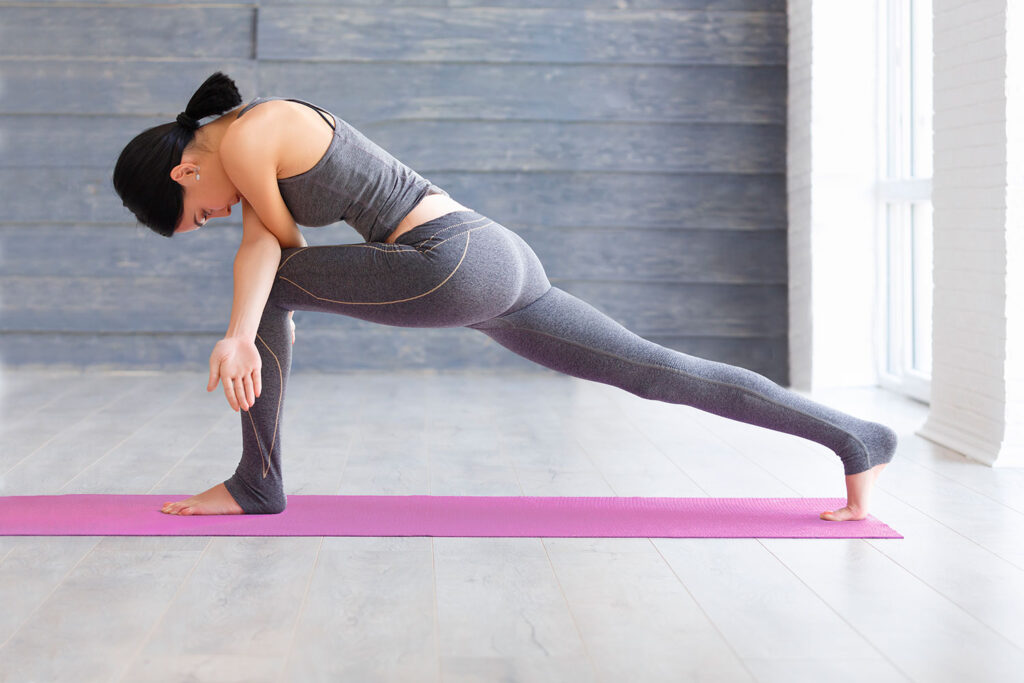
- Supported Bridge Pose (Setu Bandhasana): This pose helps to relieve knee pain by gently stretching the quadriceps and opening the hips. Lie on your back with feet hip-width apart and knees bent. Press into the feet and lift the hips, sliding a block or bolster underneath the sacrum. Adjust the height of the prop as needed for comfort. Relax the arms by your sides and breathe deeply in this supported bridge pose for several minutes.
- Legs-Up-The-Wall Pose (Viparita Karani): This pose promotes circulation and relaxation, reducing pain and swelling in the knees. Sit with one hip against a wall and swing the legs up onto the wall as you lie back. Relax the arms by your sides or place them on the belly. Close your eyes and breathe deeply, allowing yourself to rest in this pose for 5 to 10 minutes.
V. Yoga Practices and Modifications for Knee Safety
A. Using props for support and stability
- Blocks, blankets, and bolsters: These props can be used to support the knees, hips, and lower back during seated or reclined poses. Placing a blanket or bolster under the knees can help alleviate pressure and discomfort, while using blocks can provide stability and support in standing poses.
- Chair modifications for seated poses: For individuals with limited knee mobility or knee pain, using a chair for seated poses can be beneficial. Chairs can provide support and stability, allowing individuals to comfortably practice yoga without straining the knees.
B. Mindful movement and body awareness
- Avoiding overextension and hyperextension: It is essential to maintain awareness of the knee joint during yoga practice and avoid excessive strain or hyperextension. This means not pushing the knees past their natural range of motion and engaging the muscles surrounding the knees for support.
- Listening to your body and respecting limitations: Each person’s knee condition and pain levels may vary, so it is crucial to listen to your body and respect its limitations. If a pose causes sharp pain or discomfort in the knees, modify or avoid it. Focus on practicing poses and movements that feel safe and comfortable for your knees.
VI. Integrating Yoga into a Holistic Knee Care Routine
A. Combining yoga with other therapies
- Physical therapy and rehabilitation: Yoga can be incorporated into a comprehensive knee care routine that includes physical therapy exercises and rehabilitation programs. Working with a physical therapist or yoga instructor with experience in working with knee pain can help ensure a safe and effective practice.
- Meditation and mindfulness practices: Managing knee pain goes beyond the physical aspect, and incorporating meditation and mindfulness practices can help reduce stress, promote relaxation, and enhance overall well-being. Mindfulness meditation can also be used during yoga sessions to increase body awareness and focus on the present moment.
B. Adapting yoga to individual needs and conditions
- Seeking guidance from experienced yoga instructors: If you are new to yoga or have specific knee concerns, it is advisable to seek guidance from experienced yoga instructors who can provide modifications and tailor the practice to your individual needs and conditions. They can help ensure that the poses and movements are suitable and safe for your knees.
- Modifying poses and intensity as necessary: It is essential to modify poses and adjust the intensity of your yoga practice according to your knee pain levels and limitations. This may involve using props, reducing the depth of poses, or choosing alternative variations that place less stress on the knees. Always prioritize comfort and safety over pushing yourself too hard. Listen to your body and make adjustments as necessary.
Conclusion:
Incorporating yoga into a knee care routine can be an effective way to manage knee pain, promote flexibility and strength, and improve overall knee health. From gentle warm-up poses to specific strengthening and flexibility exercises, yoga offers a wide range of movements that can benefit individuals with knee pain. However, it is crucial to practice yoga mindfully, respecting your limitations and seeking guidance from experienced instructors to ensure a safe and beneficial practice. Remember, each person’s knee condition is unique, and it is important to listen to your body and make modifications as needed. With consistency and awareness, yoga can be a valuable tool in managing knee pain and enhancing overall well-being.
